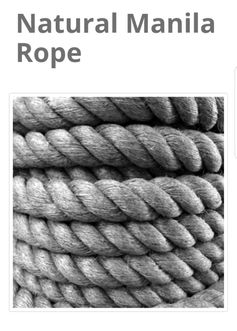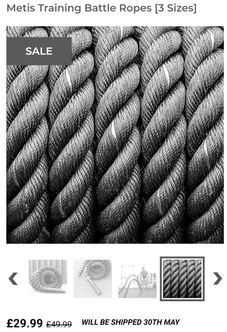Nicola Siebert-Patel




Due to Covid crisis and the lockdown, our planned degree show which was to take part in The Copeland Gallery followed by South London Gallery and Camberwell Space will not be possible. Until further notice, we will be showing our now proposed work online.
Due to this fact, I am proposing work that at this stage I am unable to fabricate.


Space and measurements:
door size at it's narrowest = 117cm
(bead at its widest will be 100cm)
On inspection of the floor plan, the Copeland would be able to accommodate both beads in any of their spaces.
I would like to propose the fabrication of two large (1m x 1m aluminium beads which will have a rope attached, appearing as if they are beads on a string which has been unravelled.
They may appear to have been left behind by a being much greater in size. Symbolic of belief or religion being unravelled.
Timescale:
Steel frame 2 x 1m high x 1m wide = 2 weeks
Aluminium casting 2 x 1m high x 1m wide = 2-4 weeks estimate
I hope to have access to the Foundry in September in which case I can begin fabrication.
I have also applied for quotes for the materials and fabrication through Mike Smith Fabrications and Haworth Casting.

Metal Type / Scrap Metal Prices UK
Aluminium Cable with Copper £0.80 per kilo
Aluminium £0.60 per Kilo
Stainless Steel £0.75 per Kilo
316 Stainless Steel £1.00 per Kilo

Why aluminium?
Perhaps my first reason for this choice would be the aesthetic of the smooth reflective surface, being reflective gives a metaphorical meaning to the beads, questioning what we see - is this our true self?
Facts about aluminium:
-
Aluminium (or aluminium) metal is very rare in native form, and the process to refine it from ores is complex, so for most of human history, it was unknown.
-
Renaissance scientists believed alum was a salt of new earth; during the Age of Enlightenment, it was established that this earth, alumina, was an oxide of a new metal.
-
Aluminium was difficult to refine and therefore uncommon in actual usage. Soon after its discovery, the price of aluminium exceeded that of gold.
-
Aluminium became much more available to the public with the Hall–Héroult process developed independently by French engineer Paul Héroult and American engineer Charles Martin Hall in 1886, and the Bayer process developed by Austrian chemist Carl Joseph Bayer in 1889. These processes have been used for aluminium production up to the present.
-
The introduction of these methods for the mass production of aluminium led to extensive use of the light, corrosion-resistant metal in industry and everyday life. Aluminium began to be used in engineering and construction. In World Wars I and II, aluminium was a crucial strategic resource for aviation. World production of the metal grew from 6,800 metric tons in 1900 to 2,810,000 metric tons in 1954, when aluminium became the most produced non-ferrous metal, surpassing copper.
-
In the second half of the 20th century, aluminium gained usage in transportation and packaging. Aluminium production became a source of concern due to its effect on the environment, and aluminium recycling gained ground. The metal became an exchange commodity in the 1970s. Production began to shift from the developed countries to the developing ones; by 2010, China had accumulated an especially large share in both production and consumption of aluminium. World production continued to rise, reaching 58,500,000 metric tons in 2015. Aluminium production exceeds those of all other non-ferrous metals combined.
Mona Hatoum Present Tense
In a similar vain to Mona Hatoum's Present Tense (above), I will build a steel frame for the beads, although four horizontal and four vertical steel rods would be sufficient to support the aluminium covering.

I have sourced various options for Manila Rope via the internet, and for my needs, I would require 2 x 220m coil at £79.99 = £159.98
Below I have included two of my previous thoughts on proposals for the Degree Show. I wanted to include these on this page as it shows the timescale of thought processes and how they have changed and been affected by the lockdown.
First official proposal during lockdown
At this point, it was unclear as to how we would be showing our work and I wanted to get a proposal in by the deadline but at the same time, I was struggling to find my way after the uncertainty around the covoid crisis. In this sketch, I am building a shrine type structure of all the objects I have been researching. I was envisaging not being able to make anything new and thinking of what I could do with objects I had around me. I was thinking of using two crucifixes, one with a buoyancy aid on and the other, smaller but still large crucifix would be painted with marble effect and attached to a necklace-like chain. At the top of this 'shrine' would be the ''God oh God'' video I made, playing on an iPad, framed in an ornate gold frame. The lead prayer beads would be woven into the structure.
Fortunately, I have had time to reconsider this proposal and realise I was coming from a place of uncertainty and needed time to process what was going on around me, and what was available to me in a way to best end my MFA and showcase the research that has been done.


First thoughts for South London Gallery / Camberwell Space / Copeland Gallery
When it was first confirmed that we would be showing at Copeland Gallery followed by South London and Camberwell Space, I had been thinking of creating four oversized religious objects, one being the giant prayer beads, then a giant crucifix necklace and a giant Kufi hat and a giant Yamaka.
I liked the idea of all of these items being too large to be of use, deeming them impractical. Questioning the use of such objects and the meanings and weight they hold.
The objects would be displayed together, initiating a conversation between them.
As we find ourselves in these unprecedented times I would like to take the opportunity to include a hypothetical proposal in my degree show proposal. The original idea I had for giant prayer beads.

Potential venues for Giant Prayer Beads:
Hyde Park London, UK
Glastonbury Festival, UK
Hampstead Heath, London
Goodwood Park, Surrey
Burning Man Black Rock City, Nevada
Storm King, Upstate New York

With mala/prayer beads, the idea is to use each bead as a count as you repeat a mantra or prayer. The giant beads can be touched, walked around in a walking meditation or climbed over. There will also be a hole between each bead, where the string (or rope in this case) will be to hold the beads together. In this hole, one could recite a mantra and hear it echoed back to them.
The beads are a reminder of our physical place in the universe. The large size is symbolic of belief systems being larger than man, a physical reminder of the body, our senses, touch, reflection and the idea of size and space. How much physical space do we occupy? Were the beads left by a being bigger than us?
The beads will be made from aluminium, supported by a steel frame interior.
I propose the size to be 2 meters high by 2 meters wide and for there to be 27 beads in total (a division of 108).
The beads will be joined by industrial-sized rope.
As with the Degree Show proposal, I am still awaiting quotes on the fabrication and materials (www.haworthcastings.co.uk and www.mikesmithstudio.com)

Receipt Cass Art (to assist with photography of images for proposal:
figures x 6 - £17.95
Tree Medium - £4.95
Tree mid green x 2 - £6.95
Total: £36.80












